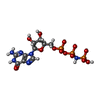Entry Database : PDB / ID : 4rsgTitle Neutron crystal structure of Ras bound to the GTP analogue GppNHp GTPase HRas Keywords / / / Function / homology Function Domain/homology Component
/ / / / / / / / / / / / / / / / / / / / / / / / / / / / / / / / / / / / / / / / / / / / / / / / / / / / / / / / / / / / / / / / / / / / / / / / / / / / / / / / / / / / / / / / / / / / / / / / / / / / / / / / / / / / / / / / / / / / / / / / / / / / / / / / / Biological species Homo sapiens (human)Method / / / Resolution : 1.907 Å Authors Knihtila, R.R. / Holzapfel, G. / Weiss, K.L. / Meilleur, F. / Mattos, C. Journal : J.Biol.Chem. / Year : 2015Title : Neutron Crystal Structure of RAS GTPase Puts in Question the Protonation State of the GTP gamma-Phosphate.Authors : Knihtila, R. / Holzapfel, G. / Weiss, K. / Meilleur, F. / Mattos, C. History Deposition Nov 7, 2014 Deposition site / Processing site Revision 1.0 Nov 4, 2015 Provider / Type Revision 1.1 Nov 18, 2015 Group Revision 1.2 Jan 13, 2016 Group Revision 1.3 Apr 25, 2018 Group / Category Item _diffrn_source.pdbx_synchrotron_beamline / _diffrn_source.pdbx_synchrotron_site ... _diffrn_source.pdbx_synchrotron_beamline / _diffrn_source.pdbx_synchrotron_site / _diffrn_source.source / _diffrn_source.type Revision 1.4 Jun 30, 2021 Group / Derived calculationsCategory diffrn_detector / diffrn_radiation ... diffrn_detector / diffrn_radiation / pdbx_struct_conn_angle / struct_conn / struct_site Item _diffrn_detector.detector / _diffrn_detector.type ... _diffrn_detector.detector / _diffrn_detector.type / _diffrn_radiation.pdbx_monochromatic_or_laue_m_l / _pdbx_struct_conn_angle.ptnr1_auth_comp_id / _pdbx_struct_conn_angle.ptnr1_auth_seq_id / _pdbx_struct_conn_angle.ptnr1_label_asym_id / _pdbx_struct_conn_angle.ptnr1_label_atom_id / _pdbx_struct_conn_angle.ptnr1_label_comp_id / _pdbx_struct_conn_angle.ptnr1_label_seq_id / _pdbx_struct_conn_angle.ptnr3_auth_comp_id / _pdbx_struct_conn_angle.ptnr3_auth_seq_id / _pdbx_struct_conn_angle.ptnr3_label_asym_id / _pdbx_struct_conn_angle.ptnr3_label_atom_id / _pdbx_struct_conn_angle.ptnr3_label_comp_id / _pdbx_struct_conn_angle.ptnr3_label_seq_id / _pdbx_struct_conn_angle.value / _struct_conn.pdbx_dist_value / _struct_conn.ptnr1_auth_comp_id / _struct_conn.ptnr1_auth_seq_id / _struct_conn.ptnr1_label_asym_id / _struct_conn.ptnr1_label_atom_id / _struct_conn.ptnr1_label_comp_id / _struct_conn.ptnr1_label_seq_id / _struct_conn.ptnr2_auth_comp_id / _struct_conn.ptnr2_auth_seq_id / _struct_conn.ptnr2_label_asym_id / _struct_conn.ptnr2_label_atom_id / _struct_conn.ptnr2_label_comp_id / _struct_site.pdbx_auth_asym_id / _struct_site.pdbx_auth_comp_id / _struct_site.pdbx_auth_seq_id Revision 1.5 Feb 28, 2024 Group / Database references / Category / chem_comp_bond / database_2Item / _database_2.pdbx_database_accession
Show all Show less
 Yorodumi
Yorodumi Open data
Open data Basic information
Basic information Components
Components Keywords
Keywords Function and homology information
Function and homology information Homo sapiens (human)
Homo sapiens (human) MOLECULAR REPLACEMENT / Resolution: 1.907 Å
MOLECULAR REPLACEMENT / Resolution: 1.907 Å  Authors
Authors Citation
Citation Journal: J.Biol.Chem. / Year: 2015
Journal: J.Biol.Chem. / Year: 2015 Structure visualization
Structure visualization Molmil
Molmil Jmol/JSmol
Jmol/JSmol Downloads & links
Downloads & links Download
Download 4rsg.cif.gz
4rsg.cif.gz PDBx/mmCIF format
PDBx/mmCIF format pdb4rsg.ent.gz
pdb4rsg.ent.gz PDB format
PDB format 4rsg.json.gz
4rsg.json.gz PDBx/mmJSON format
PDBx/mmJSON format Other downloads
Other downloads 4rsg_validation.pdf.gz
4rsg_validation.pdf.gz wwPDB validaton report
wwPDB validaton report 4rsg_full_validation.pdf.gz
4rsg_full_validation.pdf.gz 4rsg_validation.xml.gz
4rsg_validation.xml.gz 4rsg_validation.cif.gz
4rsg_validation.cif.gz https://data.pdbj.org/pub/pdb/validation_reports/rs/4rsg
https://data.pdbj.org/pub/pdb/validation_reports/rs/4rsg ftp://data.pdbj.org/pub/pdb/validation_reports/rs/4rsg
ftp://data.pdbj.org/pub/pdb/validation_reports/rs/4rsg Links
Links Assembly
Assembly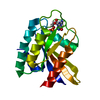
 Components
Components Homo sapiens (human) / Gene: HRAS, HRAS1 / Plasmid: pET21 / Production host:
Homo sapiens (human) / Gene: HRAS, HRAS1 / Plasmid: pET21 / Production host: 
 Sample preparation
Sample preparation / Beamline: CG4D / Wavelength: 3.3-4.5
/ Beamline: CG4D / Wavelength: 3.3-4.5 Processing
Processing MOLECULAR REPLACEMENT / Resolution: 1.907→17.009 Å / SU ML: 0.31 / σ(F): 1.41 / Phase error: 28.82 / Stereochemistry target values: ML
MOLECULAR REPLACEMENT / Resolution: 1.907→17.009 Å / SU ML: 0.31 / σ(F): 1.41 / Phase error: 28.82 / Stereochemistry target values: ML Movie
Movie Controller
Controller


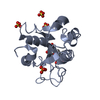
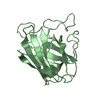
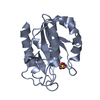

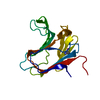

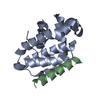
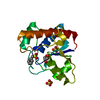
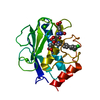

 PDBj
PDBj





















